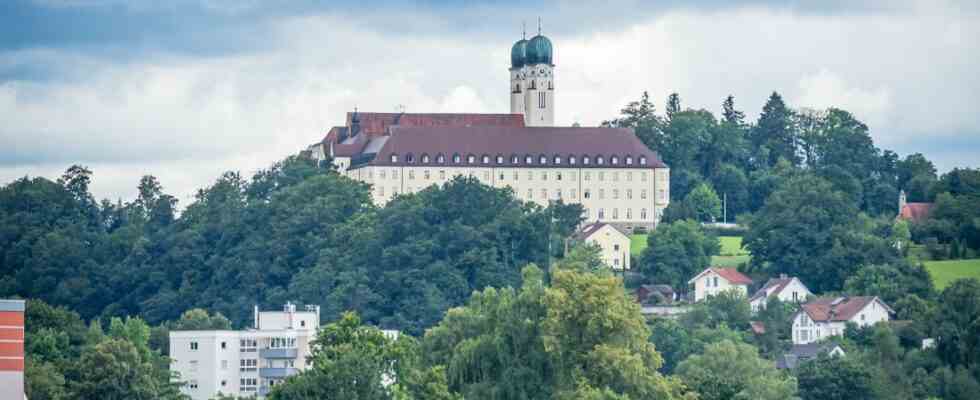Neuschwanstein Castle in the Allgäu, Rothenburg ob der Tauber in Middle Franconia or the three-river city of Passau in Lower Bavaria: all places worth seeing, but overcrowded with tourists and by no means insider tips. The nine-euro ticket for local public transport opens up many opportunities to explore places far away from the hustle and bustle throughout Bavaria. The Bayern editorial team has put together an overview for hiking fans, culture enthusiasts and nature lovers. Last part: Nature and culture in Vilshofen and the Schweiklberg monastery.
Culture and nature, history and stories – ideally combined in just one destination? This is what the city of Vilshofen on the Danube in Lower Bavaria offers. You can get there from Regensburg by regional train in about 1.5 hours. It takes two hours from Munich Central Station and 15 minutes from Passau.
Vilshofen was first mentioned in a document in 776 AD. Located at the confluence of Vils and Wolfach in the Danube, it is also called the “little three-river city” and today has around 16,000 inhabitants. Its old town with the long market street is built in the “Inn-Salzach style”. Characteristic of this type of construction is the upwardly sloping house front, behind which mostly moat roofs are hidden. These mock facades form a closed ensemble with an almost southern Italian look. This type of construction is typical of the area between Innsbruck, Passau and Hallein, but can also be found in South Tyrol, Upper and Lower Austria.
In addition, Vilshofen has a lively cultural scene. For example, the “City Gallery” in the City Tower and the “Art Gallery” in the City Hall repeatedly show regional art. A visit to the Benedictine Abbey of Schweiklberg, founded in 1905, should definitely be part of the must-do program for every excursionist interested in art and culture. The Black Africa Museum is located in the monastery and, with around 800 exhibits of traditional African art and ethnology, is the largest of its kind in southern Germany. The exhibits come from missionaries, donations and private collections.
Schweiklberg Abbey is located above the town of Vilshofen on the mountain of the same name. It takes about half an hour to walk there from the train station. The path leads through the Bürgerpark Bleiche and the Ginkgo Park and on over the Vils to the monastery grounds. Incidentally, all the “Trees of the Year” selected by the German Forest Protection Association since 1989 are planted in the Ginkgo Park. In addition to the monastery, the Schweiklberg Abbey also includes the Trinity Church, a school, a keep and the aforementioned Africa Museum. In the monastery shop, the monks sell products they have made themselves, such as beeswax candles or the Schweiklberger Geist, a medicinal herb distillate. Right next to it, the cafeteria with terrace invites you to coffee and cake. Guided tours of the monastery complex can be arranged through the Vilshofen tourist information office. And for those who are still looking for a reason to visit the “little three-river town”: The annual folk festival takes place in Vilshofen from August 26th to 31st. And a descent from the town square into the cool “beer underworld” with its impressive vaulted cellar could be just the right alternative on a hot summer’s day.

